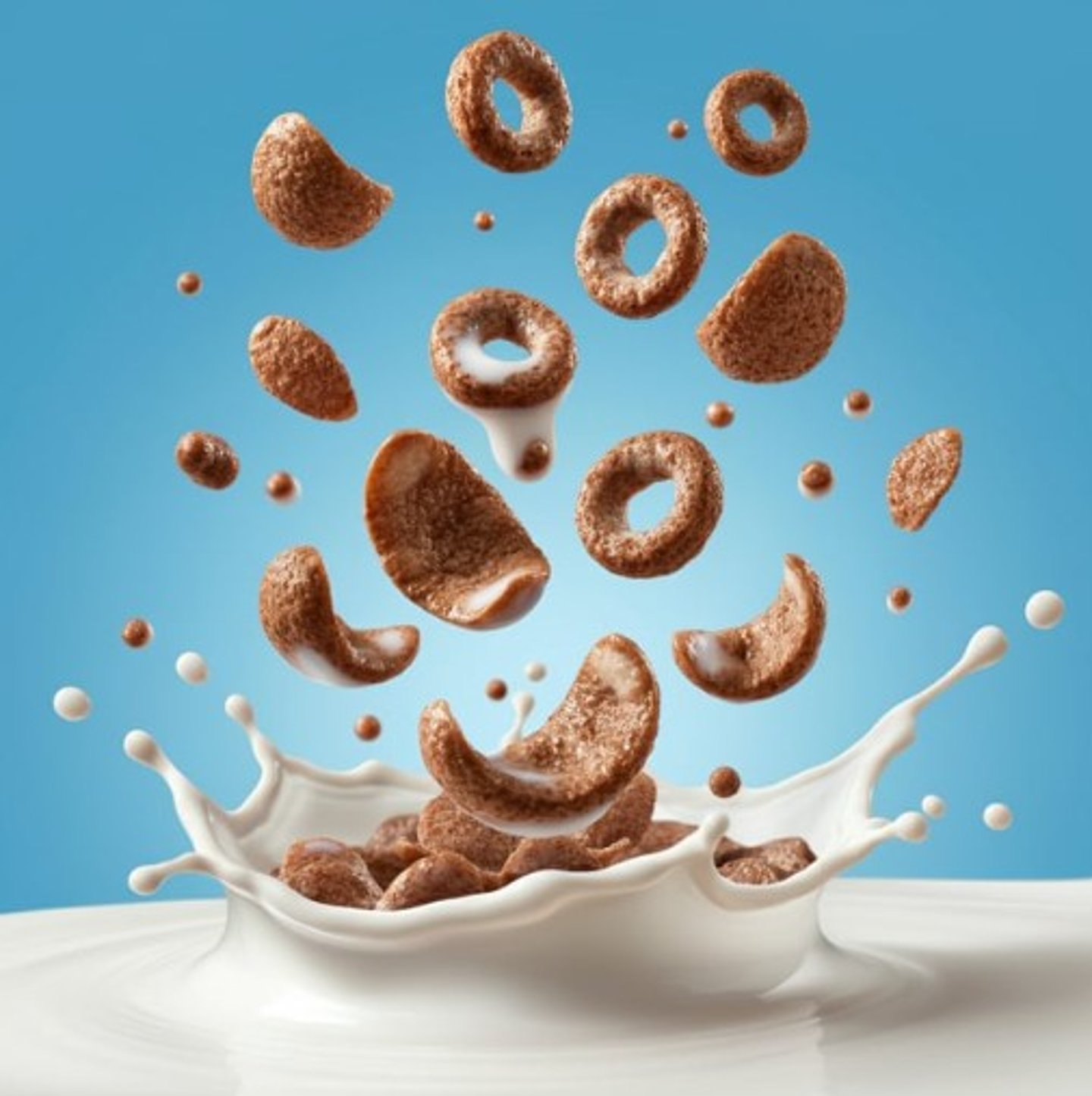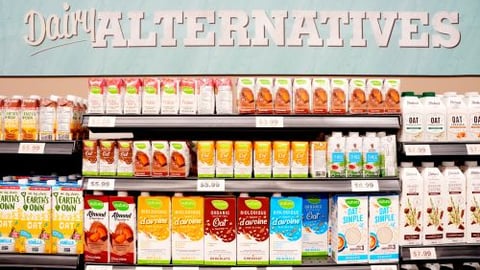How companies are meeting the demand for protein-rich products
From boosting metabolism to supporting muscle development and curbing late-night cravings, there are numerous health reasons why regular protein consumption is important for everyone.
Nevertheless, our relationship to protein is changing. Nourish Food Marketing’s 2025 Trend Report reveals 71% of consumers want to eat more protein. In addition, research from Ipsos Five reports the number of Canadians who identify protein as their most important nutritional consideration has risen 112% since 2015, and 20% since 2020. While it still trails calories, sugar and sodium in terms of health priorities, Ipsos indicates protein is, by far, the fastest growing.
This pattern is reinforced by Agriculture and Agri-Food Canada, which reports, in 2023, packaged food proteins (animal derived and plant based) totalled a volume sales of 32.4 thousand tonnes. These sales grew at a compound annual growth rate of 2.4% between 2018 and 2023 and are forecast to grow by 2.3% to 33.6 thousand tonnes in the five-year period ending in 2028.
“Our consumers are increasingly aware of the well-documented benefits of protein, such as weight management, muscle building and overall well-being,” says Sandra Cadieux, senior vice-president, strategic business development at Saputo. “As these consumers become more health conscious, there is a greater focus on meeting specific nutritional needs through a high-protein diet.”
Several factors are driving this growth. For one, Canadians are seeking protein from a greater variety of sources, and consuming it throughout the day. In response, food manufacturers are launching protein-forward innovations across several categories and featuring high-protein claims more prominently in their marketing.
“What we see from consumer input is that Canadians are open to getting protein in a wide range of categories,” says Joel Gregoire, associate director, food and drink for Mintel. “It’s not just meat and milk.”
Unlikely sources
Gregoire has seen protein claims pop up in products ranging from cereal to pretzels. That’s in addition to the recent cottage cheese craze (thank you TikTok!) and well-established items such as protein bars. And Ipsos Five research reports that, within the packaged goods sector, those items—along with yogurt and even sliced bread—are among the top categories consumers associate with “a good source of protein.”
“The big takeaway is the variety of categories in which protein is a relatable, credible claim that may not have been top of mind years ago,” Gregoire says.
Logan Chambers, senior director of marketing at PepsiCo Foods Canada, says consumer interest in protein has created an opportunity for the company’s Quaker brand. “Most consumers and families with children are turning to protein in more convenient formats and looking to incorporate its benefits across all facets of their diets, including boosting their usual morning routine,” he says.
Chambers points to several Quaker products that zero in on the desire for protein at breakfast, including Quaker Harvest Crunch Protein Granola Cereal (19 to 20 grams of protein per serving), Quaker Protein Pancake mix (13 grams per serving) and the brand’s instant oatmeal with varying levels of protein depending on the SKU.
READ: What Canadians are seeking when reaching for the snack drawer
Geared towards athletes, Truely Cereal is a high-protein, low-calorie, no sugar added breakfast option available in a variety of flavours including honey, cocoa and chocolate peanut butter.
Protein is also branching out beyond its traditional place at the centre of mealtimes and is, increasingly, becoming part of Canadians’ snacking experience. Cheese-based snacks, hummus and jerky—both meat and plant-based—are among the products consumers are grabbing for a quick-hit of protein.
On the salty snack food side, specifically, SimplyProtein’s restaurant style tortilla chips—in Sea Salt, Hint of Lime and Hint of Habanero varieties—offer 12 grams of protein per serving.
There are even options for sweet-toothed consumers who want a little more substance in their midday treats. Launched this past fall, Protein Candy promises snackers 14 grams of protein per bag and only four grams of sugar, without any artificial colours or flavours. According to Devin Powell, vice-president, retail for Protein Candy, sales in Canada have been strong enough to prompt the company to introduce the product to the U.S. market. “Protein Candy is filling the gap in the market between protein bars and candy to bring the best of both worlds together,” he says.
Gregoire says lifestyle factors, and the simple need to feel full, have as much to do with the popularity of protein-filled snacks as health benefits. “People are busy and have more of a reason for snacking, and they use protein to satiate,” he says, adding that protein can also be linked with keeping up energy levels.
It all adds up to more protein-rich products in more categories than ever before, made to consume at any time of day. As Jenny Longo, vice-president, private brands at Longo’s, puts it: “Protein-forward and healthier snacking options are a trend we’re seeing right now and expect it to grow through the foreseeable future.”
Whole foods and revamped classics
While products such as cereal and candy are expanding the notion of what foods provide a good hit of protein, interest in traditional sources hasn’t waned. Some food manufacturers are putting a higher-protein twist on staple products. One such company is Saputo, whose Dairyland 18g of Protein beverage contains twice as much protein as regular milk.
Saputo’s portfolio of protein-rich milk products also includes Joyya Ultrafiltered Milk, which offers 18 grams of protein per serving, and Milk2Go Sport Pro, which is marketed to serious athletes for muscle recovery and contains up to 38 grams of protein per bottle.
In addition, Saputo is a protein player in the snack space via its Cheese Sticks, Nibblers and Combos products. “Protein is a growing category, and we are actively innovating and launching products to answer the needs of consumers,” says Cadieux.
Even in the world of meat—arguably the first food to come to consumers’ minds when they think of protein—there are signs of innovation. According to the Whole Foods Market Trend Report for 2025, organ meats are having a moment. The report states: “Organ meats are being touted as a superfood providing significant protein, vitamins and minerals, leading shoppers to seek meat blends that combine traditional muscle meat like ground beef with organ meats and making it easier to enjoy the nutritional benefits without having to learn how to prepare liver, kidney or heart.”
Generational effects
Protein is popular with consumers of all ages. PepsiCo’s Chambers cites research from the NNEdPro Global Institute for Food, Nutrition and Health that shows online search interest for the term “high protein” increased 32% in the 12 months leading up to May 2023, with no indication this five-year high will slow down.
But not everyone approaches it the same way. “The way our consumers engage with protein varies significantly across generations,” says Saputo’s Cadieux. “Our gen-Z consumers tend to focus more on sustainability and the impact of diet trends on social media, while our millennial consumers value convenience and health, often opting for protein-rich snacks and meal replacements to fit their busy lifestyles.”
Teresa Spinelli, owner of the Alberta-based independent grocery chain Italian Centre Shop, says gen-X and baby boomer shoppers have slightly different priorities. “Older generations tend to stick with familiar protein sources,” she explains. “I think older demographics are interested in protein for its benefits in maintaining muscle mass to support healthy aging.”
This article was first published in Canadian Grocer’s December2024/January 2025 issue.



